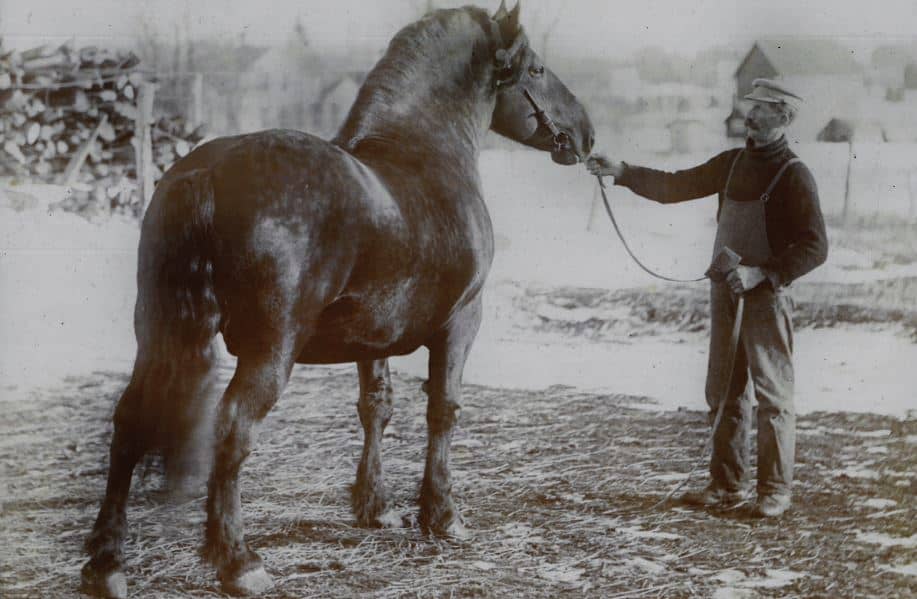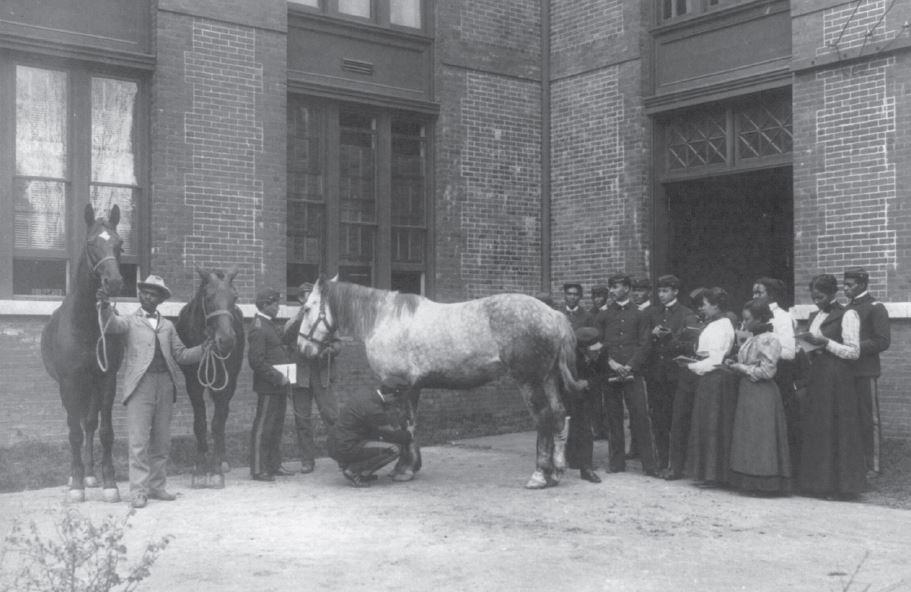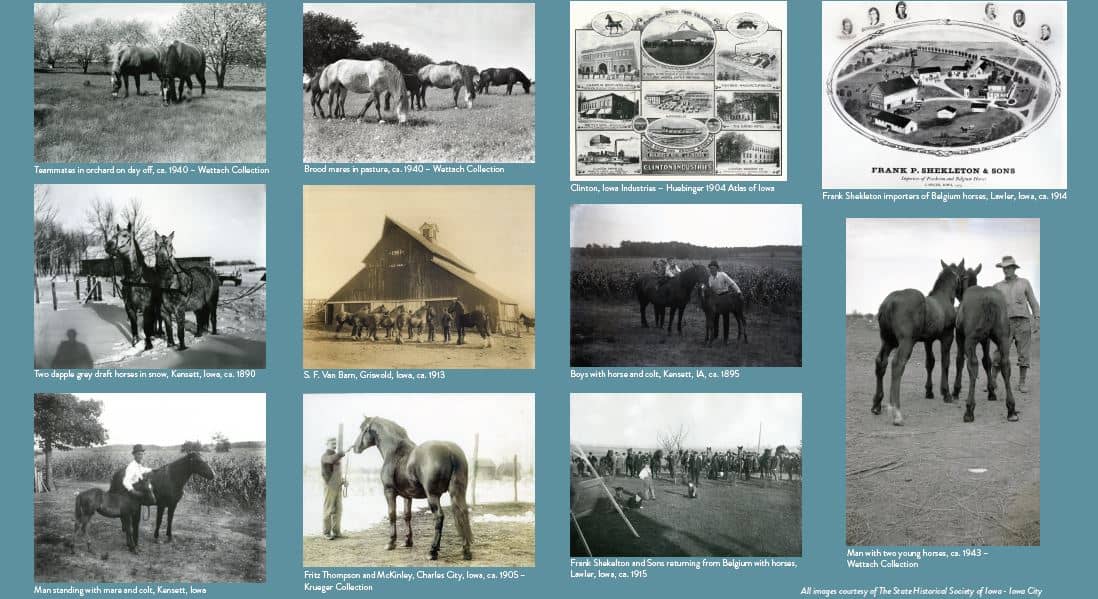
Between 1870 and 1945, the state of Iowa, with its favorable climate and available grass, hay, and grain, became a
leading producer of heavy draft horses for farming and urban labor. While lighter horses such as Morgans and
Standardbreds were needed for common carriage driving, larger animals were required to power heavier machinery.
Among immigrants from other countries, many of Eastern Iowa’s settler humans came from Germany and Bohemia
(part of the modern-day Czech Republic). The favored draft horse breeds came from France, Belgium, England, and
Scotland. Each breed is distinctively colored. Percherons (France) are usually dark gray to white as they age, Belgians
(Belgium) are a golden chestnut color, Shires (England) are black with white lower legs, and Clydesdales (Scotland) are bay or dark brown with white lower legs.
The first Percheron stallion, named Duke of Normandy, was imported to Iowa in 1869 by A.W. Cook of Charles City.
Percherons became the most popular American draft breed. Iowa City’s W.H. Jordan was a pioneer importer and
breeder of Shire horses. By 1900, Iowa surpassed Illinois as the top draft horse-producing state. The peak years of draft horse breeding, when the number of horses on Iowa farms exceeded 1.5 million and the farm value per head rose to $120, were 1910-15.
Iowa’s iconic farmland was carved out of prairie sod and forests by these large horses working alongside humans. Equines bred here were shipped around the country to build and power cities as well as agricultural production, and thousands more were shipped overseas to fight U.S. and foreign wars.
Framed on the wall:
“The World’s Greatest Importing Establishment, Main Barns of the Holbert Horse Importing Co.” c. 1880
Chromolithograph
State Historical Society of Iowa – Iowa City
Reproduced on panels:
Fritz Thompson with McKinley
State Historical Society of Iowa – Iowa City

Courtesy of the State Historical Society of Iowa – Iowa City.
Owners took special pride in their potent draft stallions. McKinley embodied the standard advocated by the Board of Directors of the Iowa State Agricultural Society: “A draft horse at maturity, in fairly good condition, ought to weigh from 1,800 to 2,000 [pounds]. If a horse of this weight is of good disposition, of proper conformation, is sound in body and limb, with heavy bone, legs set squarely under him, with feet of sufficient size and quality, possessing at the same time that style and action so frequently seen in the highest type of draft horse now-a-days, he ought to make an
ideal draft sire.”

Courtesy of the State Historical Society of Iowa – Iowa City.
African American Students Judging Horses, Hampton Institute, 1899-1900
Frances Benjamin Johnston Collection, Library of Congress
Hampton Normal and Agricultural Institute was founded in 1868 by General Samuel Armstrong to train African American educators. These educators taught students the knowledge and skills to become gainfully employed and self-supporting as craftsmen or industrial workers. The class of Hampton students pictured here is learning about the features of different horse breeds, from the heavier gray Percheron draft type, to the smaller Morgan or cob type, to the taller, leggier Thoroughbred or Standardbred type. Although standard jobs in the horse industry were still almost exclusively male, female as well as male teachers needed basic equine knowledge and skills to pass on to their students. Whether students pursued professional employment with horses or not, all races and sexes still had to coexist with them in their daily lives.

All images courtesy of the State Historical Society of Iowa – Iowa City.
Teammates in orchard on day off, ca. 1940 – Wettach Collection
Brood mares in pasture, ca. 1940 – Wettach Collection
Clinton, Iowa Industries – Huebinger 1904 Atlas of Iowa
Frank Shekleton importers of Belgium horses, Lawler, Iowa, ca. 1914
Two dapplegrey draft horses in snow, Kensett, Iowa, ca. 1890
S. F. Van Barn, Griswold, Iowa, ca. 1913
Frank Shekelton and Sons returning from Belgium with horses, Lawler, Iowa, ca. 1915
Man with two young horses, ca. 1943 – Wettach Collection
Man standing with mare and colt, Kensett, Iowa
Fritz Thompson and McKinley, Charles City, Iowa, ca. 1905
Boys with horse and colt, Kensett, IA, ca. 1895
State Historical Society of Iowa – Iowa City
A selection of photographs by A. M. Wettach depicting rural life is also available via the Iowa Digital Library.
